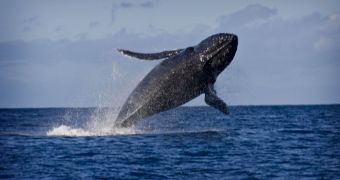A study led by scientists at Duke University and published in the November 27 issue of the journal Current Biology explains the blue whale pirouette as a hunting technique which allows them to trap the prey from underneath.
“This behavior probably improves the whales' chances to engulf the most krill possible,” declared Ari Friedlaender, co-author of the study, as cited by Yahoo! News.
The research team attached motion sensors to the bodies of 22 blue whales in order to determine the behavior of the largest mammal ever known when hunting huge amounts of shrimplike prey.
The sensors registered a 360-degree turn of the whale's body the moment the creature reaches for its prey.
“As it opens its mouth it begins to roll over. It's a very energetically costly thing to do — it's like a parachute opening and the whale slows down considerably,” explained Prof. Friedlaender.
Scientists believe the trick allows the whale to determine the exact location of the krill patch, as well as prevent the latter's escaping.
Although involving a lot of skills and energy to perform the ballerina figure, the result is worth it, especially considering that a krill cluster makes the one-day food of the blue giant. Missing it would be quite painful.

 14 DAY TRIAL //
14 DAY TRIAL //